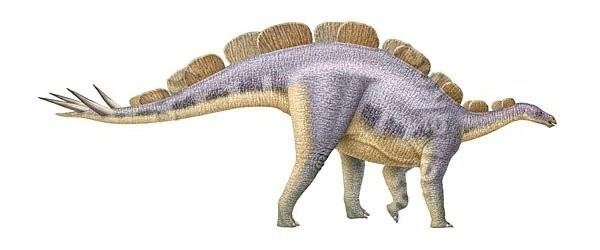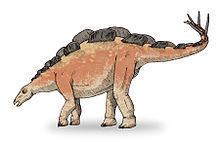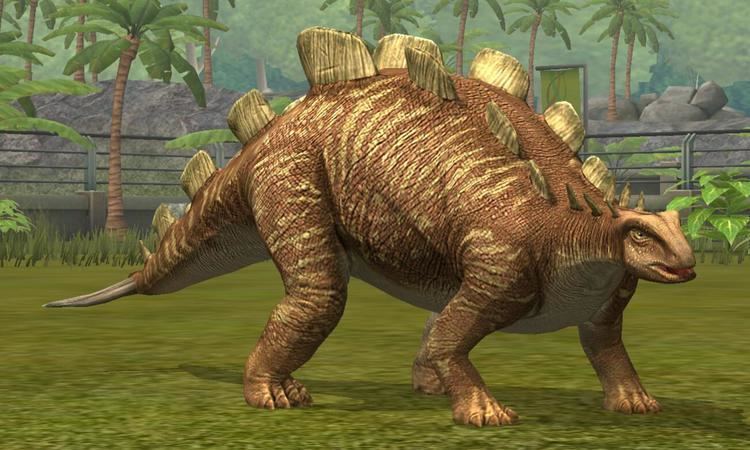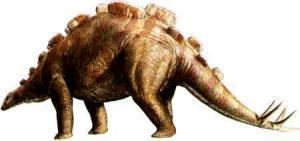Phylum Chordata | Class Reptilia Rank Genus Subfamily †Stegosaurinae | |
 | ||
Similar Tuojiangosaurus, Lexovisaurus, Dacentrurus, Huayangosaurus, Kentrosaurus | ||
Wuerhosaurus is a genus of stegosaurid dinosaur from the Early Cretaceous Period of China and Mongolia. As such, it was one of the last genera of stegosaurians known to have existed, since most others lived in the late Jurassic.
Contents

Discovery and species

Wuerhosaurus homheni is the type species, described by Dong Zhiming in 1973 from the Tugulu Group in Xinjiang, western China. The generic name is derived from the city of Wuerho.

The remains consisted of the holotype IVPP V.4006, a skull-less fragmentary skeleton, and the paratype IVPP V4007, three vertebrae from the tail of a second individual.

A smaller species from the Ejinhoro Formation in the Ordos Basin in Inner Mongolia, W. ordosensis, was formalized by the same researcher in 1993. It is based on specimen IVPP V6877, a fragmentary skeleton lacking the skull. It was found in 1988. A third species, W. mongoliensis, is based on dorsal and caudal vertebrae as well as a pair of pubes.

Susannah Maidment and colleagues proposed in 2008 that Wuerhosaurus should be considered a junior synonym of Stegosaurus, with type species W. homheni as Stegosaurus homheni and second species W. ordosensis regarded as dubious. This opinion has been contested, however.
The type species, W. homheni, is known from the Tugulu Group, while W. ordosensis was found in the Ejinhoro Formation.
Description
Wuerhosaurus homheni was probably a broad-bodied animal. Gregory S. Paul in 2010 estimated the length at 7 metres (23 ft) and the weight at four tonnes. Only a few scattered bones have been found, making a full restoration difficult. Its dorsal plates were at first thought to have been much rounder or flatter than other stegosaurids, but Maidment established this was an illusion caused by breakage: their actual form is unknown. W. homheni had a pelvis of which the front of the ilia strongly flared outwards indicating a very broad belly. The neural spines on the tail base were exceptionally tall.
W. ordosensis was estimated by Paul to have been 5 metres (16.5 feet) long and weigh 1.2 tonnes. It too has a broad pelvis but the neural spines are shorter. The neck seems to have been relatively long.
Paleobiology
Wuerhosaurus was lower to the ground than most other stegosaurids; scientists believe that this was an adaptation to let it feed on low-growing vegetation. Wuerhosaurus, like other stegosaurids, perhaps had a thagomizer on the end of its tail, like that of Stegosaurus which featured four bony spikes that would most likely have been used for self-defense. A single spike was found but was seen by Dong as being positioned on the shoulder.
